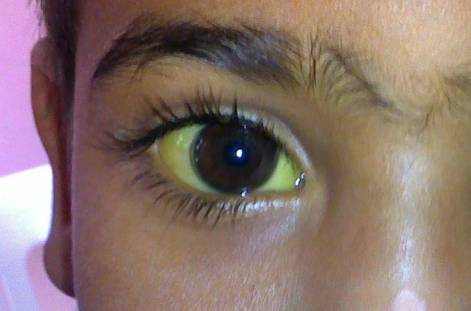

An eye doctor might recommend surgery if a pinguecula is causing a lot of discomfort. Surgical removal of a pinguecula is an option as well. This can be treated with steroid eye drops or anti-inflammatory medication. Pingueculae also can lead to localized inflammation and swelling. These can cover the growth to ease some of the effects of dryness and limit further UV exposure to some degree. Your eye doctor might also prescribe scleral contact lenses. If dry eye is the cause of the pinguecula, eye drops formulated to treat dry eyes also may be prescribed. If dry eye symptoms occur with a mild pinguecula, lubricating eye drops may help.

This frame design blocks more sunlight than regular frames. For the best protection, choose sunglasses with a wraparound frame. Photochromic lenses also shield your eyes from harmful high-energy blue light. They darken automatically in sunlight and provide 100 percent UV protection. This is even true on overcast and cloudy days because the sun's UV rays penetrate cloud cover. These are the best ways to protect your eyes from UV rays and reduce the risk of pingueculae. It is important to wear sunglasses and hats anytime you are outside. Plus, continued exposure encourages them to keep growing. It's the sun's harmful UV rays that cause pingueculae in the first place. It's very important for anyone with pingueculae to protect their eyes from the sun. Pinguecula treatment depends on how severe the symptoms are. LEARN MORE: Pterygium: What is surfer’s eye? Treatment of pinguecula Sometimes people confuse pingueculae with eye growths called pterygia, but they are different. In some cases, pingueculae can become swollen and inflamed - this is called pingueculitis. Red, bloodshot eyes are another symptom that may appear with pingueculae. Dry eyes can also cause blurred vision and a foreign body sensation. This can cause dry eye symptoms, such as a burning sensation, stinging and itching. If the pinguecula grows large enough, the tear film may not be able to spread around it, across the surface of the eye. But they can cause symptoms if they disrupt the eye's tear film (the natural coating of moisture over the eye).Ī pinguecula looks like a yellow or light brown spot on the white part of the eye. In most people, pingueculae don't cause many symptoms. However, they can occur at any age for those who spend a lot of time outdoors without sun protection. Pingueculae are more common in middle-aged or older people who spend a lot of time in the sun. Dry eye disease may also be a contributing factor and can promote the growth of pingueculae. Other common risk factors include frequent or long-term exposure to dust and wind. Ultraviolet radiation from the sun is the most common cause of pingueculae. They usually appear close to the cornea, on the white part of the eye ( sclera) between the iris and the nose. Pingueculae are not a type of cancer, but they can form when the eyes get too much exposure to UV rays.

They are yellowish or very light brown and have a slightly raised, triangle shape. A pinguecula is a type of growth that can form on the conjunctiva of the eye.


 0 kommentar(er)
0 kommentar(er)
